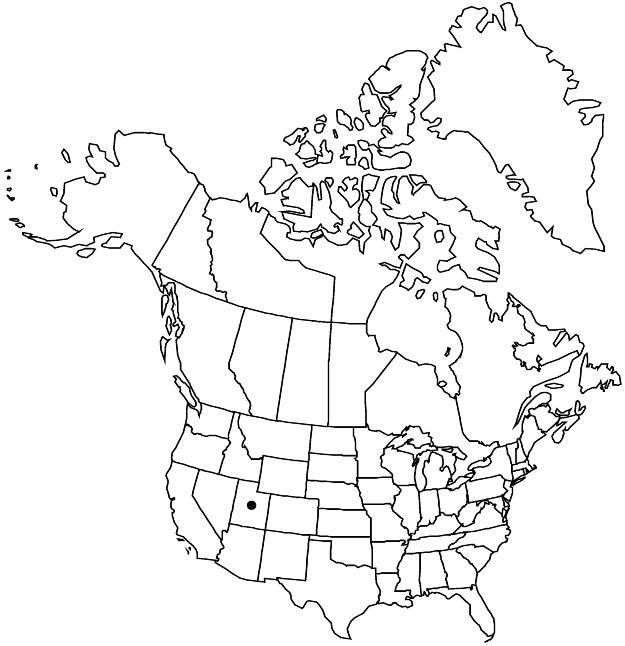Viola frank-smithii
Brittonia 44: 303, fig. 1E – H. 1992.
Plants perennial, caulescent, not stoloniferous, 1.5–12.5 cm. Stems 1–4, decumbent or ascending to erect, glabrous, on caudex from fleshy rhizome. Leaves basal and cauline; basal: 2–3; stipules lanceolate, margins fimbriate, apex acute; petiole 1.5–6(–14) cm, glabrous; blade broadly ovate to deltate, 1.3–2.9(–4.1) × 1.3–2.9 cm, base cordate to truncate, margins crenate, eciliate, apex obtuse to rounded, surfaces glabrous; cauline similar to basal except: petiole 1.3–6.5 cm; blade 1.1–2.2 × 0.7–1.6 cm. Peduncles 2.5–7(–11.2) cm, glabrous. Flowers: sepals lanceolate to linear-lanceolate, margins eciliate, auricles 0.5–1.5 mm; all petals usually pale purple, sometimes almost white adaxially, lateral 2 and lowest purple-veined, lateral and upper 2 violet abaxially, white basally, lateral 2 bearded, lowest 10–16(–18) mm, spur greenish to pale lime green, gibbous, 1.6–3 mm; style head bearded; cleistogamous flowers unknown. Capsules ovoid, 3–7 mm, glabrous. Seeds pale yellow, 2.4–2.8 mm.
Phenology: Flowering May–Jul.
Habitat: Cracks, crevices, and narrow ledges of vertical limestone and dolomite rock faces, humid, shady places
Elevation: 1600–2100 m
Discussion
Of conservation concern.
Viola frank-smithii is endemic to Logan Canyon, Cache County, Utah. N. H. Holmgren (2005d) wrote that it likely has its ancestral ties with V. adunca.
Selected References
None.
